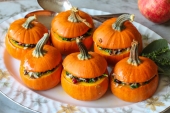Here's my way of talking about CO2:
I've two bottles, gravy browning in water, one 280ppm, other 430ppm. The difference is visible. They're equivalent to CO2 in the atmosphere, pre-Industrial Revolution and now. While the gravy browning is absorbing light, the CO2 absorbs infra-red. What there was pre-Industrial was enough, the difference is already causing chaos. It's idiocy, but we're still adding to it. Totally insane that we're adding more than the year before, every year!
To get a grip on it, we need to move away from economic growth and improving standards of living, both based on fatness of wallets. It works by innovation, seeking more cost efficient ways to extract from holes in the ground, make stuff, sell it and dump in other holes. More and more, faster and faster... can Nature cope?
We need to move to Quality of Life, measured by smiles - sharing, caring, mending, living with nature.
To replicate my bottles, take 4 x 1 litre bottles. 14 grams of gravy browning in the first, 21.5 (impossible on scales measuring no fractions of grams, so 22 g) in the second. Make up to a litre with water. From each pour 20 grams into the third and fourth bottles, and fiil to 1 litre. The result is qualitative, not measurably accurate. The first two are equivalent to half the air above our heads, the latter two to looking through about 100 metres of air.




 ); you don't see it about much. I enjoy eating that, and I'm able to minimise slug damage. I don't know if there's much between them, Lubera had some on sale - seem to have stopped, maybe they've realised lots of varieties can be eaten. Go for large-growing sorts for bigger tubers, easier to peel. Maybe the ray florets will give a clue as to root flavour.
); you don't see it about much. I enjoy eating that, and I'm able to minimise slug damage. I don't know if there's much between them, Lubera had some on sale - seem to have stopped, maybe they've realised lots of varieties can be eaten. Go for large-growing sorts for bigger tubers, easier to peel. Maybe the ray florets will give a clue as to root flavour.



